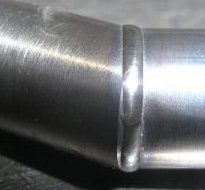Overlap Welding with a Laser
 Overlap welding is a common joining procedure for plastics and other synthetic materials, as well as industrial and fashion fabrics. The joint fuses two overlapping sheets of the material. The result is that there is a double thickness of material on one side of the weld.
Overlap welding is a common joining procedure for plastics and other synthetic materials, as well as industrial and fashion fabrics. The joint fuses two overlapping sheets of the material. The result is that there is a double thickness of material on one side of the weld.
Traditional Overlap Welding
The sheets to be welded should be aligned into position with the correct amount of overlap space and clamped firmly into place. In traditional welding, the torch that is the heat source is angled towards the double thickness. The optimal angle for the torch would be between 30 and 40 degrees from the vertical. The heat effectively melts the surface of the bottom sheet and then transfers back to the bottom of the top sheet and fuses the joint. If the sheets are not firmly clamped, the heat from the torch may blow a hole through the top sheet. There is also a danger that the welded joint will distort and crack in the heat.
Laser Welding
The laser welding procedure for an overlap is both simpler and more accurate. As before, the materials to be welded are clamped together to keep the overlap area in place. The wavelength of the laser beam is adjusted, usually to the infra-red part of the spectrum, so that the top layer is transparent to it and it transfers the heat to the top surface of the bottom layer. As this top layer is heated it, in turn, transfers the heat to the bottom part of the top layer. The two surface layers melt and fuse.
The laser beam is applied vertically to the material and its wavelength can be calculated precisely to suit different types of materials. This reduces the possibility of both distortion and puncturing and other damage due to overheating. The process is faster than traditional welding and can be adapted for miniature welded bonds as well as large objects.